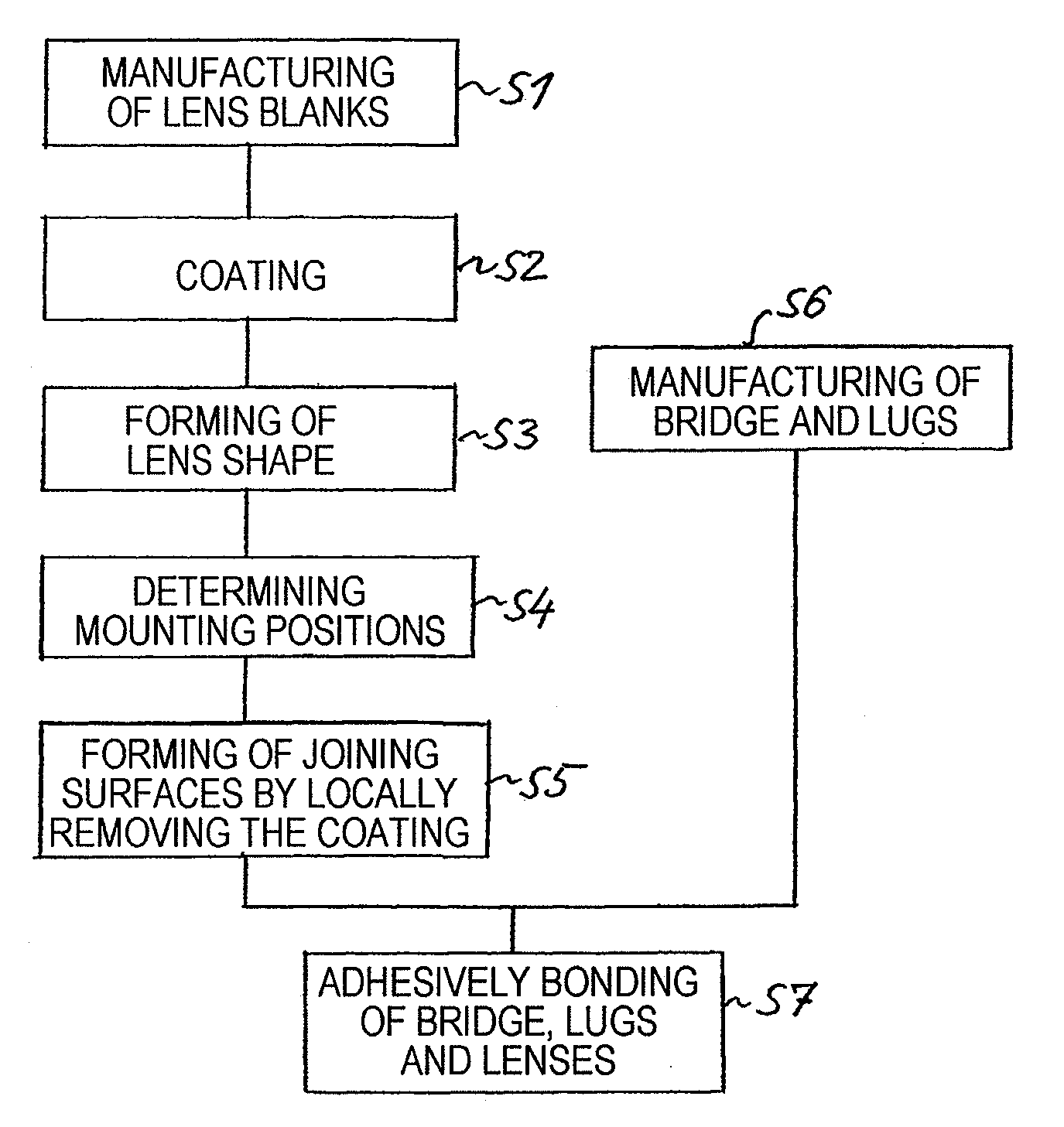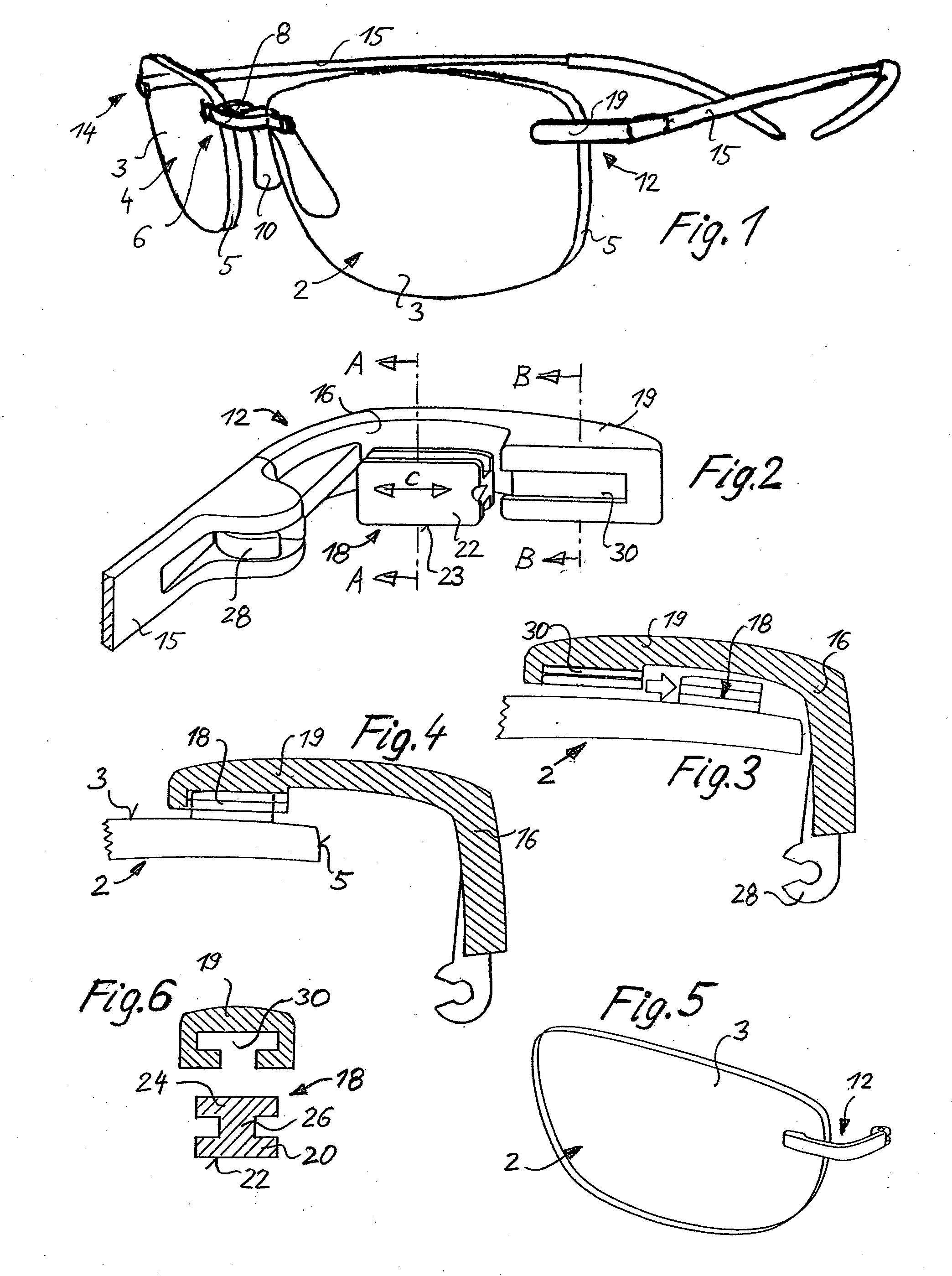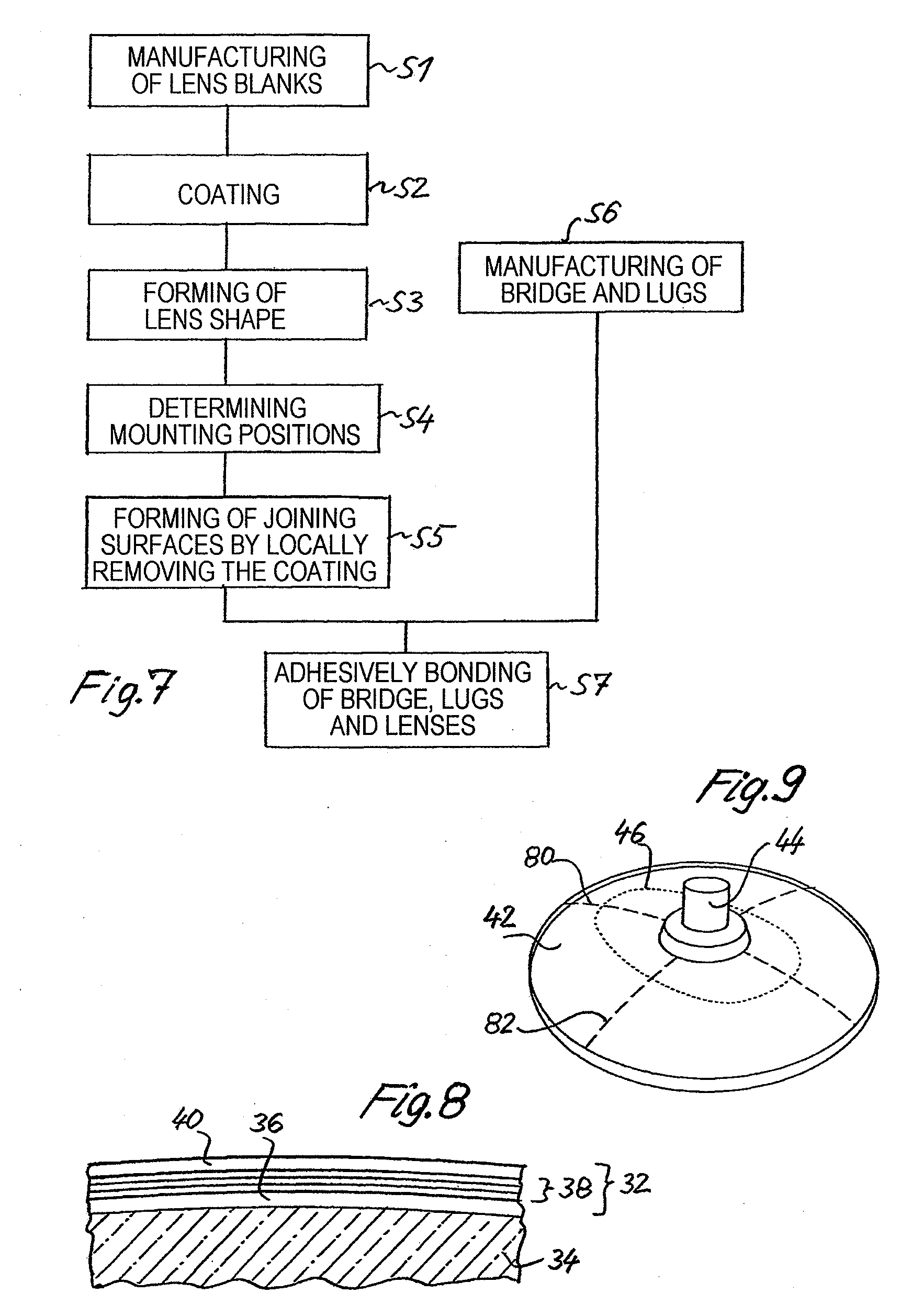Method of Manufacturing Rimless Spectacles and a Mask Suited for Use with said Method
a technology of rimless spectacles and masks, which is applied in the direction of spectacles/goggles, grinding machines, instruments, etc., can solve the problems of spectacle lens breakage, large rejection, through-hole formation in the lens,
- Summary
- Abstract
- Description
- Claims
- Application Information
AI Technical Summary
Benefits of technology
Problems solved by technology
Method used
Image
Examples
first embodiment
[0049]Hereinafter at first by way of FIGS. 1 to 6 rimless spectacles manufactured according to the invention shall be illustrated.
[0050]FIG. 1 shows these spectacles in perspective view obliquely from the front. The spectacles comprise a left-hand lens 2, a right-hand lens 4 and a bridge 6 disposed between the two lenses.
[0051]Each of the two spectacle lenses 2 and 4 has a front side 3 visible in FIG. 1, a rear side not visible in FIG. 1 and a circumferential edge 5 which delimits the lens radially outwardly with respect to its geometrical and optical centers. The bridge 6 is an elongated element disposed between the two lenses 2 and 4 and interconnecting the latter. The bridge 6 consists of a body 8 and two fasteners not shown in FIG. 1, each of which is disposed at one end of the bridge 6 and is bonded to the front side 3 of the lens 2 and 4, respectively, visible in FIG. 1. A pad member 10 is mounted to the bridge 6 and serves for supporting the spectacles at the nose of the wear...
second embodiment
[0089]In this second embodiment the fastener 18 comprises the projection 66 which encompasses the edge 5 of the spectacle lens 2. The fastener 18 is not only adhesively bonded at its base area 22 to the front side 3 of the lens 2 but is also adhesively bonded at the inside 70 of the projection 66 to the edge 5. However, this is merely an additional adhesively bonding the joining surfaces of which are substantially smaller than the joining surfaces on the front side 3 of the lens 2. In order to permit this additional adhesive bonding it is not necessary to remove a coating at the edge 5 of the lens, because there the base material of the spectacle lens is exposed anyway after forming the lens shape.
third embodiment
[0090]In the third embodiment according to FIGS. 17 to 20 the body 16 of the lug is a component made of metal having the configuration shown in FIG. 17. The body 16 of the lug consists of two curved rods 72 which are parallel to each other and at their one ends are merged into each other forming the charniere 28 and are firmly connected to an oval plate 74 at their other ends.
[0091]The fastener 18 of the third embodiment is an injection-molded plastic member having an oval base area and an arched surface so that in total it has the shape of an oval lens. The fastener 18 is adhesively bonded at its base area to the front side 3 of the lens 2 and includes a slit 76 extending substantially in parallel to its base area. The shape and the dimensions of the slit 76 are adapted to the shape and the dimensions of the plate 74 and to the ends of the rods 72 connected thereto in such way that the plate 74 can be inserted in the slit 76 so that the relative arrangement of the fastener 18 and t...
PUM
 Login to View More
Login to View More Abstract
Description
Claims
Application Information
 Login to View More
Login to View More - R&D
- Intellectual Property
- Life Sciences
- Materials
- Tech Scout
- Unparalleled Data Quality
- Higher Quality Content
- 60% Fewer Hallucinations
Browse by: Latest US Patents, China's latest patents, Technical Efficacy Thesaurus, Application Domain, Technology Topic, Popular Technical Reports.
© 2025 PatSnap. All rights reserved.Legal|Privacy policy|Modern Slavery Act Transparency Statement|Sitemap|About US| Contact US: help@patsnap.com



